Since its creation in 2017, The Good Goods has established itself as a unique media and creative studio, dedicated to transforming the fashion, textile, and luxury industries.

The Turkish brand Khailo Silver has been offering modern and elegant jewellery for over ten years. With meticulous finishes inspired by fine and high jewellery, their premium designs, often adorned with Swarovski crystals or other precious and semi-precious stones, have made them internationally renowned.

Combining simplicity and sophistication, Khailo Silver continues to carve its path in an industry undergoing significant transformation, particularly with the rise of digital trends, while maintaining artisanal craftsmanship and material integrity.
How would you describe Khailo Silver's DNA?
We’ve been selling high-end jewellery for ten years. Our models are chic and sophisticated, offering an alternative to traditional jewellery, which can be very expensive, so our pieces cater to those who don’t want to spend thousands of euros but still value quality and timeless designs.

You’re a regular at the Bijorhca show, now part of Who’s Next.
We’ve been attending Bijorhca for nine years. We used to participate in about ten shows a year, but the industry has changed, especially post-COVID. We’ve kept the best events, but the market isn’t always easy. Online often takes precedence over physical and human interactions.
Why is it attending a show like Bijorhca so important?
The human touch, of course. But today, everything can be done online, yet when people discover our products for the first time, it’s essential that they see them in person to test their quality, touch them, and even try them on. For an initial connection, I believe it’s crucial.
Your brand is based in Turkey. What are your main markets at the moment?
Our largest market is the Middle East (Dubai, Kuwait, Qatar), followed by Europe. We organize European distribution from a company in Spain, focusing on France and Italy, with some business in Greece.
The jewellery market in the Middle East differs from European consumer habits.
Each country has its own customs and purchasing behaviour. We don’t sell the same products in Europe as in Dubai, and likewise what sells in Spain differs from Greece, and it’s fascinating to compare consumer behaviour based on cultural shopping norms. For example, in Dubai, we sell much higher-quality items than in Europe, where people prefer to buy more affordable pieces more frequently.

What are your development goals for 2024–2025?
Two key words: meeting and observing. We always try to present a new collection at the show. We’re here to meet new clients and observe trends, our competitors, and the market positioning. It’s an opportunity to challenge ourselves and rethink our strategies.
What are the major trends for this season?
I see creations becoming simpler—smaller, more accessible, less flashy. Minimalism prevails, and pieces are no longer as ornate or showy as they were a few seasons ago.
What are your wishes for 2024–2025?
To stay healthy!

Since its creation in 2017, The Good Goods has established itself as a unique media and creative studio, dedicated to transforming the fashion, textile, and luxury industries.

In the vibrant setting of the Beyond the Noise space at Premiere Classe, a talk hosted by Mixte Magazine captivated the audience with an audacious theme: how the new generation of designers is reshaping fashion by reconnecting with nature and craftsmanship.

Founded by sisters Fazla and Eda Topbaş, Vuqu is a Turkish leather goods house based in Istanbul that skillfully combines elegance and functionality.

Founded by Japanese designer Akane Horikami, Ten. has become a go-to brand for those seeking a blend of nature, minimalism, and contemporary elegance. At this fifth participation in Premiere Classe, Ten. continued to captivate with a collection exploring fluid lines while introducing more geometric elements.

At her debut showing at Premiere Classe, Raquel Figueroa Borque, founder of the leather goods brand RFB, shared her journey, inspirations, and vision for a sustainable, timeless, and meaningful approach to fashion.

Founded by Ludovica Virga, House of Mua Mua stands out with its playful, humour-filled approach to fashion. At this September’s edition of Premiere Classe, Ludovica presented her new collection, Happiness is a Summer in Italy, inspired by her summer holiday memories. This collection brilliantly reflects the brand’s DNA, combining light-heartedness, humour, and meticulous craftsmanship.

The hat and accessories house Catarzi 1910, led by the Nistri couple as co-directors and designers, represents far more than a family business. It embodies a century of artisanal traditions, creativity, and innovation carried across generations.

Amambaih, founded by Mariela Schwartz Montielle, represents a unique fusion of art, culture, and humanity. Originally from Paraguay, Mariella draws on her multicultural roots to realise a creative vision that goes far beyond simply crafting artisanal shoes and bags.

As the western aesthetic captivates designers, brands, and consumers, one French brand is riding the wave: Soco. Created in 1932, this “sleeping beauty” brand was revived three years ago, following a brief closure, thanks to the efforts of two passionate sisters-in-law who share the same first name. So the story of Soco is continuing under the stewardship of the “Maries Mignon.”

The Turkish brand Khailo Silver has been offering modern and elegant jewellery for over ten years. With meticulous finishes inspired by fine and high jewellery, their premium designs, often adorned with Swarovski crystals or other precious and semi-precious stones, have made them internationally renowned.

Founded in 2015 by the Italian duo Michelangelo Brancato and Francilla Ronchi, Coreterno is a niche perfume brand whose name means “eternal heart” in Italian, and the brand creates unique candles imbued with esotericism. Their style is a blend of rock, almost punk aesthetics, and a mystical aura, forming an invisible bridge between the ancient and the modern.
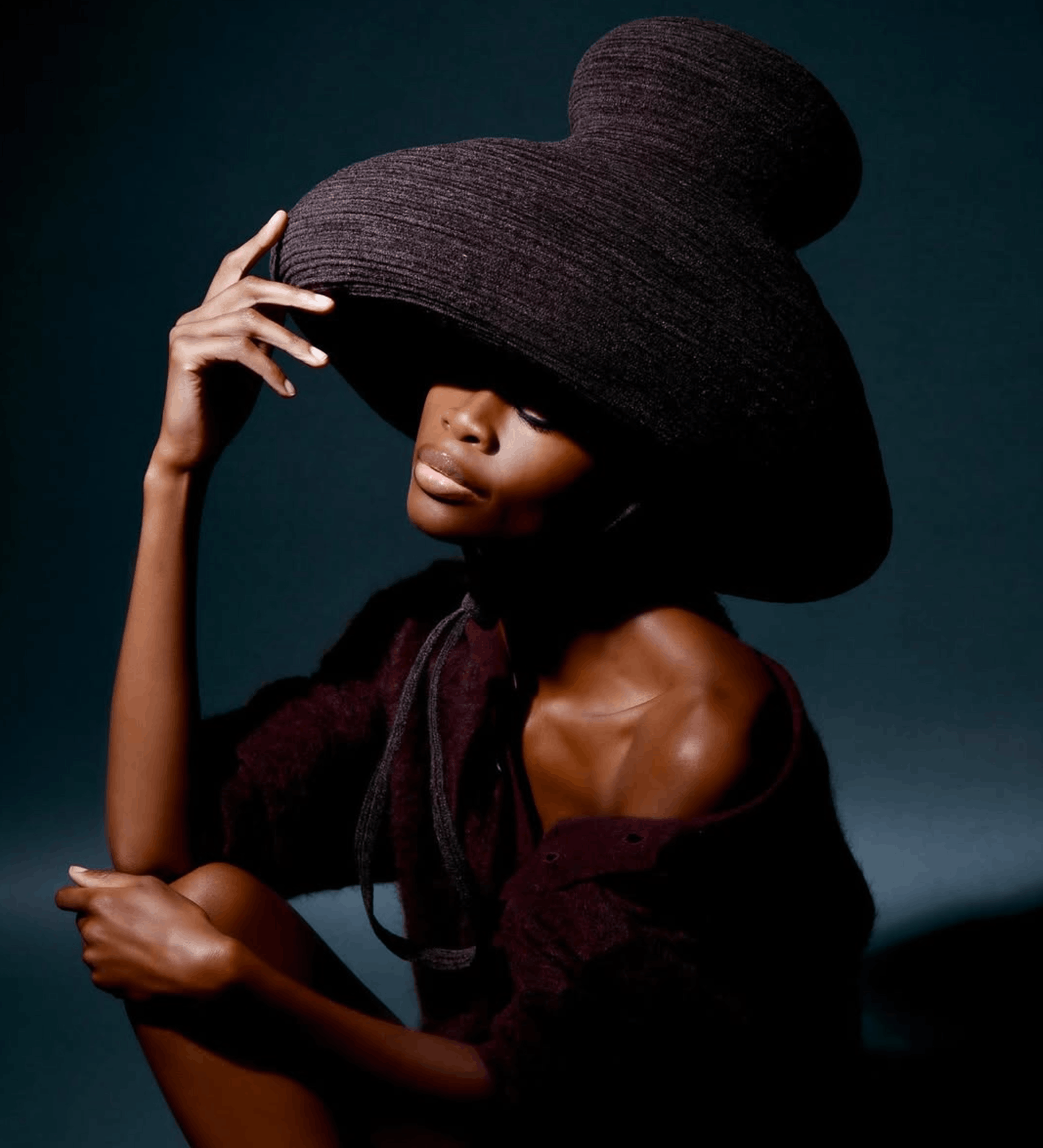
Based in New York City, the hat brand Esenshel, founded and led by Rodney Patterson, embodies a unique approach to hat creation.

Presenting for the first time at Premiere Classe, Amina Galal represents a new generation of Arab designers who blend tradition and modernity with a personal, emotional touch.

For Thaïs Roblowski, fashion is a true calling, and after studying design and pattern-making at the Chambre Syndicale and interning at Thom Browne in New York and Mugler, she became a stylist at Cacharel and Alzaro.
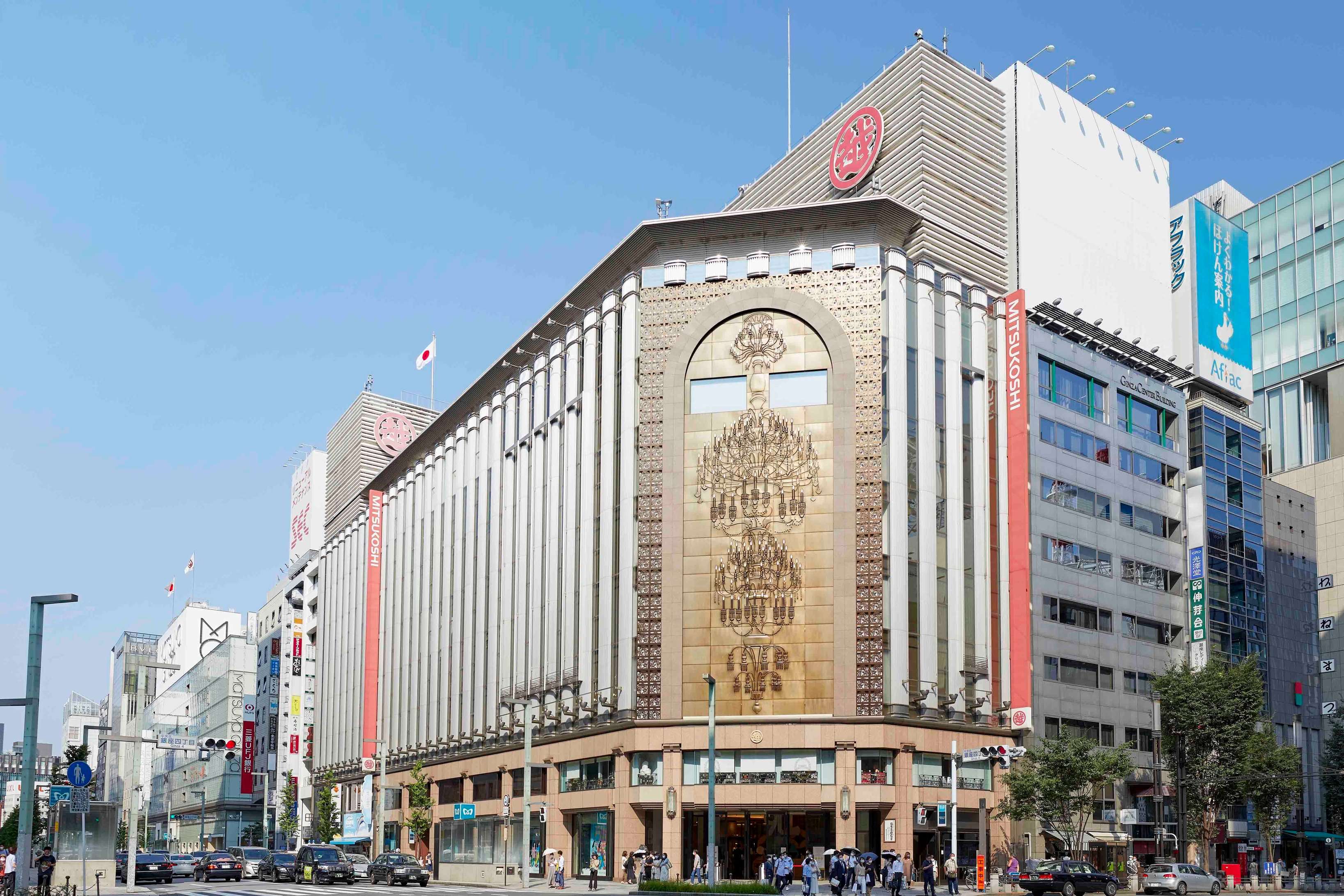
The Parisian eye of Japanese department store Isetan Mitsukoshi tells us about her latest Who’s Next fashion crushes.

Reinhard Plank (Founder and milliner), originally from Vipiteno (Italy) near the Austrian border, first studied design in Vienna before turning to millinery. "I started with hats in Vienna, and my first classic model was a great success," he says. Drawn to Florence's rich hat-making heritage, Reinhard chose this city to perfect his craft.

At the latest edition of “Who’s Next,” we spoke with Camille Pouvreau and Lucas Bouteille, watch and jewellery buyers for Galeries Lafayette, about the burgeoning men’s jewellery market and the long-lasting nature of trends in the watch sector.

A key player in the watchmaking industry since the 1950s, the American Movado Group initially established itself through the distribution of traditional Swiss brands. Over time, it expanded globally, broadening its portfolio to include contemporary designs and jewellery.

Founded in 1954 by the current owner’s parents, Antonio, the Italian shoe brand Guglielmo Rotta is the perfect example of a family craftsmanship that has evolved while remaining true to its roots. At this edition, the brand presented a collection that perfectly illustrates its commitment to quality, timelessness, and Italian craftsmanship.
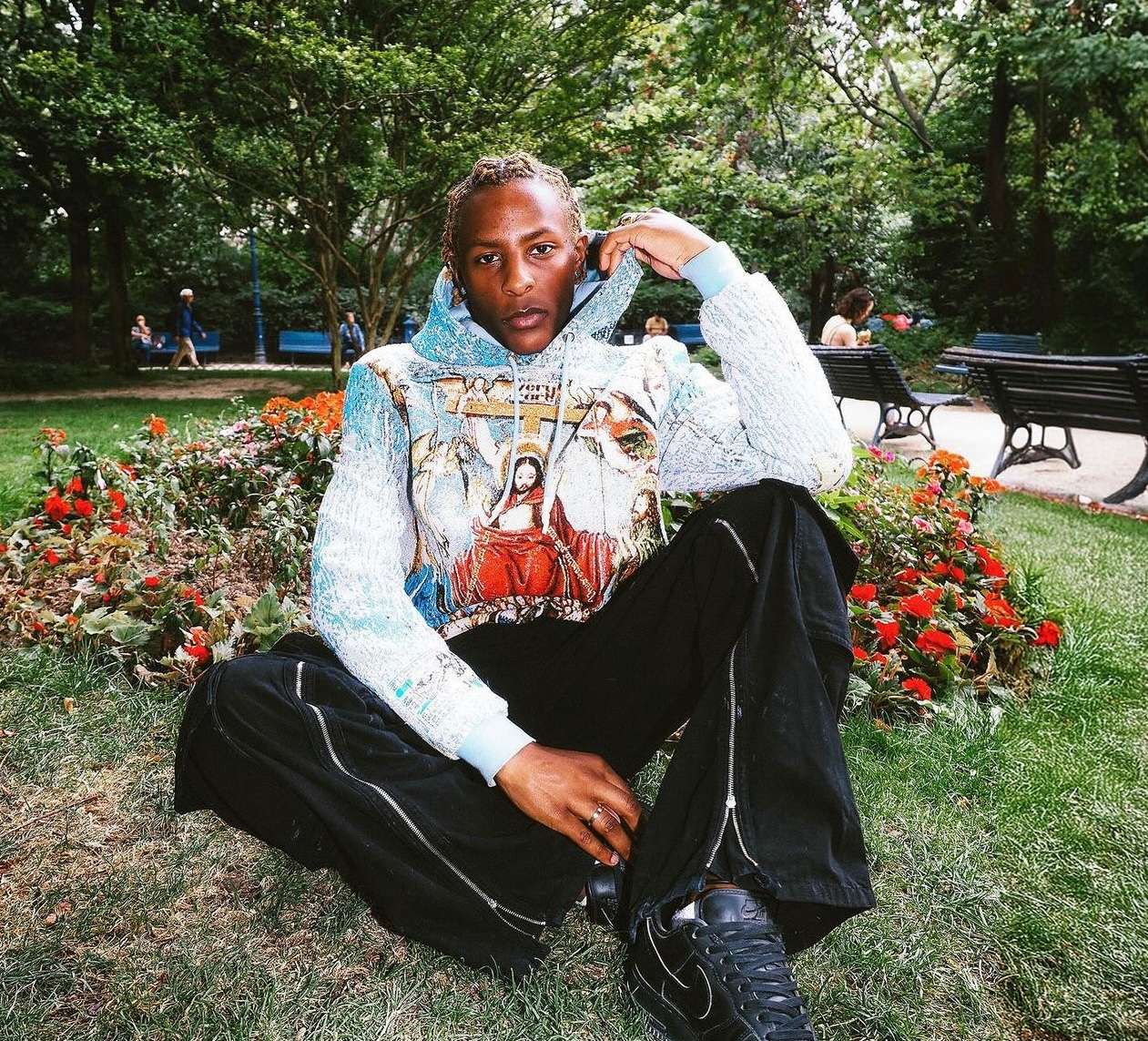
“Streetwear but make it Couture!” Very Rare, a lifestyle and ready-to-wear brand under the direction of Raf Reyes, embodies an avant-garde vision of streetwear through what the designer defines as ‘street couture’. Born during the 2020 health crisis, this family-run brand, founded with his older brother, stands out for its fluid silhouettes, intricate details such as embroidery, flocking, and graphic prints, and strong influences from 90s subcultures.

For over 15 years, BSL, a Turkish ready-to-wear brand, has made a name for itself in the fashion market in Turkey, with stores in the country’s major cities such as Istanbul, Izmir, Ankara, and Antalya. Initially focused on its own retail outlets, BSL adopted a new strategy last year: expanding its distribution network across Europe.

Reinterpreting its heritage Braccialini, the iconic Italian brand from Florence, is celebrating its 70th anniversary this year. "We were born in Florence, and the natural and architectural beauty of Tuscany greatly inspires our creations," shares Daniela, the brand's sales agent.

Craftsmanship at the heart of jewellery creation: a self-taught journey and the rise of gatsby soldering workshop Fifteen years ago, Julie Sion made her mark in the world of costume jewellery with a unique and passionate approach. "I stumbled into this profession a bit by chance," she admits. Self-taught, her first steps into creation were through a craft-focused approach, before collaborating with French workshops to ensure ethical and high-quality production for her eponymous brand. These collaborations led her to develop a strong and engaged community, not only around her creative project but also through the human values she upholds in her work.

During their debut at Who’s Next, the South Korean brand Temp’s, led by Joanne Jeon Eun-jung, captured attention with its deep commitment to sustainability, combined with a modern and conceptual approach to design.

Pamela Kemmat, the influencer and founder of the Pamela Rouen boutique, and her mother Nadège Thevenon, founder of the Paloma Rouen boutique, share their thoughts on “Who’s Next,” an event they regard as the beating heart of the fashion industry.

Meet Abasiekeme Ukanireh, the visionary founder and artistic director of Eki Kere, a Nigerian brand that has captivated audiences with its unique creations, showcasing vibrant raffia-based designs.

Who's Next? The great thing about the initial chaos of Who's Next is that it has lasted.

Street Culture resonates with the complexity of a city’s soul. The people, as a community, are those who define and codify its intricacies. Lifestyle, Fashion, Art and Music intertwine through the cosmopolitan blend that characterizes the singularity of a city’s vibe and energy.

Since its inception in 2019, La Mode Européenne (LME) has stood out for its innovative and transformative approach to the fashion industry. By creating solidarity shops in Congo-Brazzaville and Cape Verde, stocked through donation boxes for clothing and accessories circulated in France and Europe, La Mode Européenne is committed to social and professional reintegration and creating local employment.

Lavinia Muth, an economist specialising in business ethics for actors of the fashion landscape, has dedicated 15 years to advancing social and ecological standards in the textile and creative industries. Her work as an external auditor, inspector, and investigator, in collaboration with Messe Frankfurt’s trade shows for instance, underscores her commitment to fighting against “corporate sustainability” and “green-washing”.

Julien Martinez, founder of the high-end ‘souliers’ brand Souliers Martinez, embodies the perfect fusion of traditional artisanal craftsmanship and contemporary innovation. Combining his deep Spanish roots with his Parisian cultural influences, his company stands out with a unique approach to leather weaving, supported by committed sustainable values and strong ethics.

Founded in Rimini from the vision of the eponymous young Italian designer, Judy Mazzotti, Judy created her brand with a focus on the future and research and development centred on innovation and sustainability.

Every year since 1985, Hyères has played host to the Festival de la Mode et de la Photographie.

Bastien Beny and Simon Delacour are the creative minds behind the Domestique brand, leather goods accessories made in Paris.

At La Caserne, a sustainable fashion incubator in Paris's 10th arrondissement, Jeanne Friot crafts impactful fashion.
Amid the excitement of the upcoming Who’s Next event at Porte de Versailles (Paris), BRUT ICON emerges as a showcase of cutting-edge creative innovation within a unique space.

At this year's Bijorhca, Milano Fashion & Jewels will be showcasing its excellence in made-in-Italy jewellery. Four brands will be on hand to showcase the art of Italian jewellery.

At the heart of timeless elegance, sprezzatura, and unique artisanal expertise, Italy stands out on the international creative stage for its dual spirit—both rebellious and innovative, yet traditional and timeless. From the 18th to the 20th of January 2025 at Paris’ Porte de Versailles, Who’s Next, the unmissable gathering for fashion creators and professionals, will open its doors for a new edition that promises to be a true celebration of “Made in Italy.”

From the 18th to the 20th of January 2025, the Who’s Next trade show, more specifically the denim-focused area at the heart of our What’s Up Space, will serve as the stage for a vibrant celebration of denim. This timeless fabric, which transcends eras without losing its appeal, will be in the spotlight.
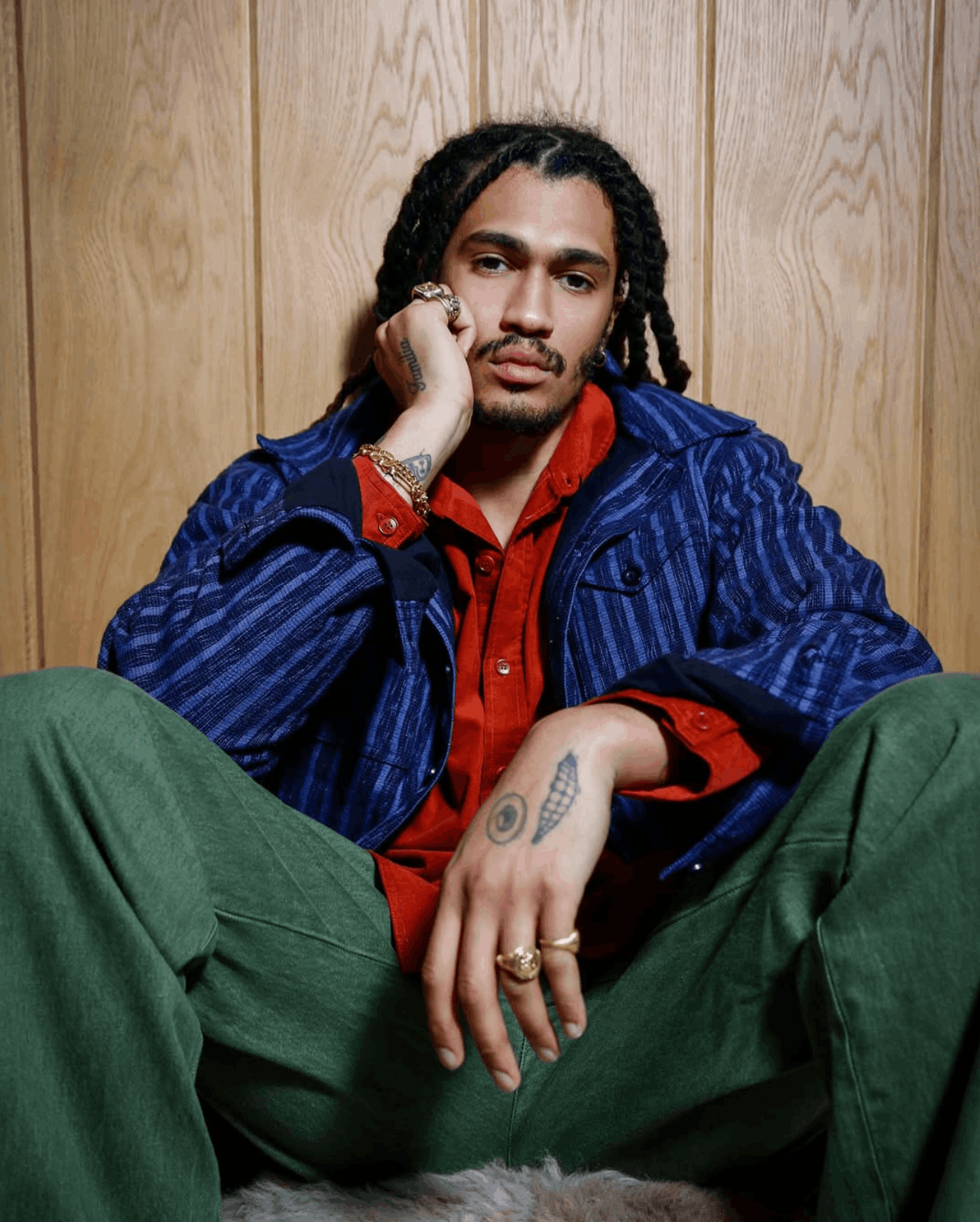
From the 18th to the 20th of January 2025 at Porte de Versailles, Who’s Next will open its doors to celebrate the creative spectrum of menswear. More than just a fashion event, it offers an immersive experience in a world where creativity and craftsmanship boldly converge with innovation in a uniquely vibrant setting.

From the 18th to the 20th of January 2025, Who’s Next will showcase its creative spectrum in Paris at Porte de Versailles, offering an unmissable event for fashion enthusiasts, industry professionals, and designers.

Since its creation in 2017, The Good Goods has established itself as a unique media and creative studio, dedicated to transforming the fashion, textile, and luxury industries.

During the latest edition of Premiere Classe, held in the heart of the Carrousel du Louvre, one of the event's most anticipated moments was the talk by Stephen Jones, the iconic British milliner.

In the vibrant setting of the Beyond the Noise space at Premiere Classe, a talk hosted by Mixte Magazine captivated the audience with an audacious theme: how the new generation of designers is reshaping fashion by reconnecting with nature and craftsmanship.

Founded by sisters Fazla and Eda Topbaş, Vuqu is a Turkish leather goods house based in Istanbul that skillfully combines elegance and functionality.

Founded by Japanese designer Akane Horikami, Ten. has become a go-to brand for those seeking a blend of nature, minimalism, and contemporary elegance. At this fifth participation in Premiere Classe, Ten. continued to captivate with a collection exploring fluid lines while introducing more geometric elements.

At her debut showing at Premiere Classe, Raquel Figueroa Borque, founder of the leather goods brand RFB, shared her journey, inspirations, and vision for a sustainable, timeless, and meaningful approach to fashion.

Founded by Ludovica Virga, House of Mua Mua stands out with its playful, humour-filled approach to fashion. At this September’s edition of Premiere Classe, Ludovica presented her new collection, Happiness is a Summer in Italy, inspired by her summer holiday memories. This collection brilliantly reflects the brand’s DNA, combining light-heartedness, humour, and meticulous craftsmanship.

Amambaih, founded by Mariela Schwartz Montielle, represents a unique fusion of art, culture, and humanity. Originally from Paraguay, Mariella draws on her multicultural roots to realise a creative vision that goes far beyond simply crafting artisanal shoes and bags.

From 18 to 20 January 2025, the Who’s Next trade show at Porte de Versailles (Paris) invites you to experience the warm, bucolic charm of countryside living through a diverse selection of brands—ranging from iconic names to promising new talents with innovative and sustainable concepts.

As the western aesthetic captivates designers, brands, and consumers, one French brand is riding the wave: Soco. Created in 1932, this “sleeping beauty” brand was revived three years ago, following a brief closure, thanks to the efforts of two passionate sisters-in-law who share the same first name. So the story of Soco is continuing under the stewardship of the “Maries Mignon.”

The Turkish brand Khailo Silver has been offering modern and elegant jewellery for over ten years. With meticulous finishes inspired by fine and high jewellery, their premium designs, often adorned with Swarovski crystals or other precious and semi-precious stones, have made them internationally renowned.

Founded in 2015 by the Italian duo Michelangelo Brancato and Francilla Ronchi, Coreterno is a niche perfume brand whose name means “eternal heart” in Italian, and the brand creates unique candles imbued with esotericism. Their style is a blend of rock, almost punk aesthetics, and a mystical aura, forming an invisible bridge between the ancient and the modern.

From the 18th to the 20th of January 2025, Who’s Next will once again take over the iconic halls of Porte de Versailles in Paris, inviting visitors to explore the inspiring Villa Beauté space. A true intersection of beauty, wellness, and lifestyle, this innovative hub showcases the latest trends and technologies in an immersive, multi-sensory environment.

Based in New York City, the hat brand Esenshel, founded and led by Rodney Patterson, embodies a unique approach to hat creation.

Presenting for the first time at Premiere Classe, Amina Galal represents a new generation of Arab designers who blend tradition and modernity with a personal, emotional touch.

For Thaïs Roblowski, fashion is a true calling, and after studying design and pattern-making at the Chambre Syndicale and interning at Thom Browne in New York and Mugler, she became a stylist at Cacharel and Alzaro.

Founded two and a half years ago, Chou au Carré offers upcycled accessories made in France using fabrics from major fashion houses. For founder Victoria, the brand was a natural fit.
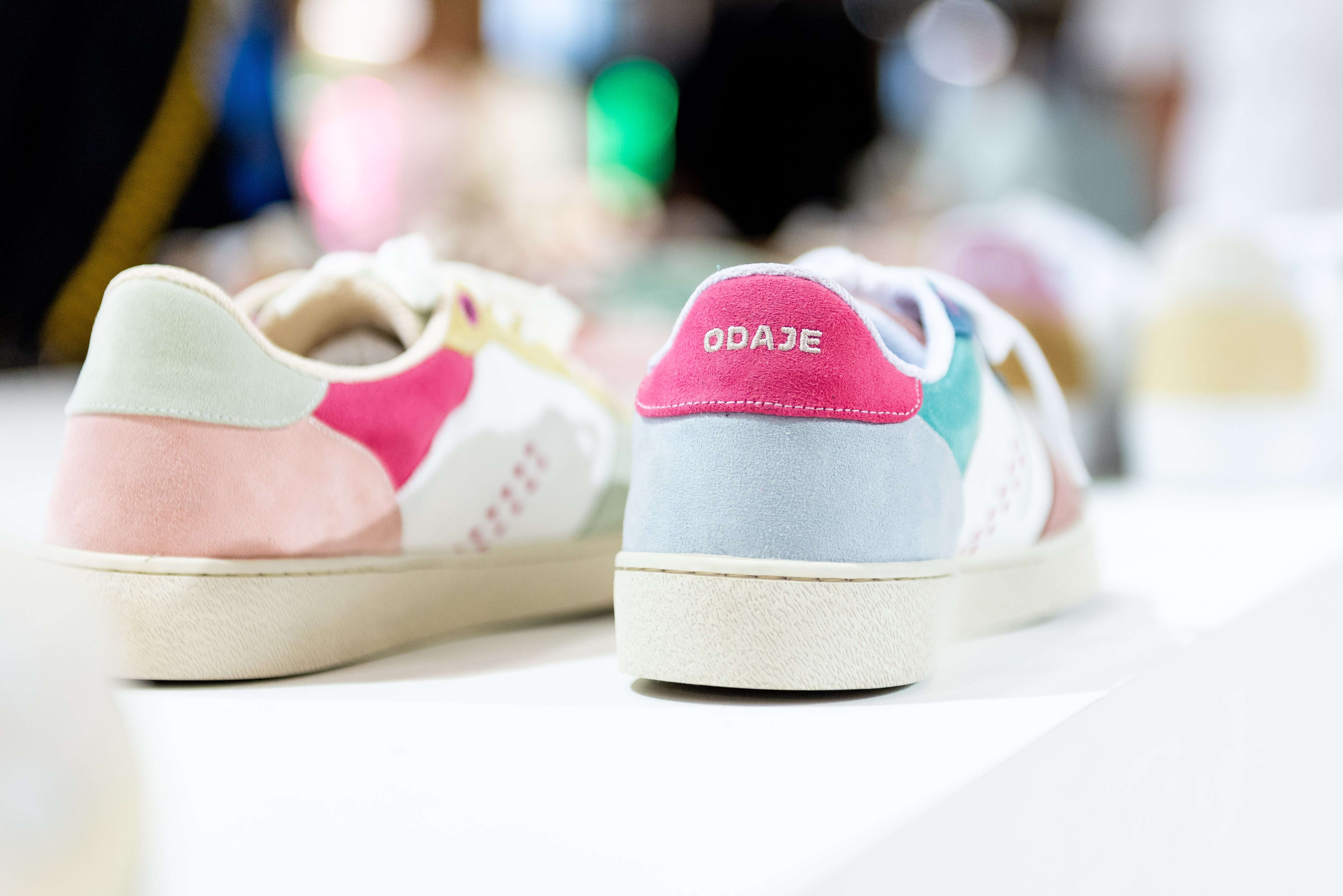
Modern and elegant shoes, a sustainable vision, and a manifesto for responsible and positive fashion. Welcome to Odaje. Meet Alexis, the Commercial Director of this footwear brand.

Amid the vibrant energy of emerging talents shaping the future of fashion, one designer stands out for her bold vision and unwavering commitment to sustainability. Léa Theres Lahr-Thiele, the young German prodigy and winner of the prestigious NEONYT Texpertise Sustainability Award, shines brightly this season with her meaningful and innovative approach to design.

Special boutique, special offer : a hotel buyer’s perspective.

Fashion, an eternal cycle, is witnessing the resurgence of iconic brands that defined the 2000s alongside new players on the global scene, whose aesthetics reinterpret this pivotal decade in contemporary fashion. For the upcoming edition of Who's Next, taking place from 18 to 20 January 2025 at Porte de Versailles, Paris, we celebrate the return of these legendary labels as part of our exhibition.

As winter sets in, the collections showcased at our upcoming event shine with warm tones and comforting textures.

Timeless, artisanal, and sustainable: denim is reinvented at the Athenian brand Sac&Co.

In the vibrant atmosphere of Premiere Classe, Comptoir 102, a Dubai-based concept store, continues its pursuit of unique pieces, set against a backdrop of remarkable craftsmanship. Through the insightful lens of Stephanie Chesneau, Sales Director, the store shares its impressions of this edition, where each encounter uncovers unexpected treasures and stories waiting to be shared.

Last September, the Fédération Française du Prêt-à-Porter Féminin enhanced Who's Next with talks and workshops on digital marketing in fashion. Here's a look back at the ‘Did TikTok kill Instagram? Three experts in fashion and social media discuss community, authenticity, resilience and engagement.

The Parisian eye of Japanese department store Isetan Mitsukoshi tells us about her latest Who’s Next fashion crushes.

Reinhard Plank (Founder and milliner), originally from Vipiteno (Italy) near the Austrian border, first studied design in Vienna before turning to millinery. "I started with hats in Vienna, and my first classic model was a great success," he says. Drawn to Florence's rich hat-making heritage, Reinhard chose this city to perfect his craft.

At the latest edition of “Who’s Next,” we spoke with Camille Pouvreau and Lucas Bouteille, watch and jewellery buyers for Galeries Lafayette, about the burgeoning men’s jewellery market and the long-lasting nature of trends in the watch sector.

A key player in the watchmaking industry since the 1950s, the American Movado Group initially established itself through the distribution of traditional Swiss brands. Over time, it expanded globally, broadening its portfolio to include contemporary designs and jewellery.

Founded in 1954 by the current owner’s parents, Antonio, the Italian shoe brand Guglielmo Rotta is the perfect example of a family craftsmanship that has evolved while remaining true to its roots. At this edition, the brand presented a collection that perfectly illustrates its commitment to quality, timelessness, and Italian craftsmanship.

“Streetwear but make it Couture!” Very Rare, a lifestyle and ready-to-wear brand under the direction of Raf Reyes, embodies an avant-garde vision of streetwear through what the designer defines as ‘street couture’. Born during the 2020 health crisis, this family-run brand, founded with his older brother, stands out for its fluid silhouettes, intricate details such as embroidery, flocking, and graphic prints, and strong influences from 90s subcultures.

For over 15 years, BSL, a Turkish ready-to-wear brand, has made a name for itself in the fashion market in Turkey, with stores in the country’s major cities such as Istanbul, Izmir, Ankara, and Antalya. Initially focused on its own retail outlets, BSL adopted a new strategy last year: expanding its distribution network across Europe.

Reinterpreting its heritage Braccialini, the iconic Italian brand from Florence, is celebrating its 70th anniversary this year. "We were born in Florence, and the natural and architectural beauty of Tuscany greatly inspires our creations," shares Daniela, the brand's sales agent.

Craftsmanship at the heart of jewellery creation: a self-taught journey and the rise of gatsby soldering workshop Fifteen years ago, Julie Sion made her mark in the world of costume jewellery with a unique and passionate approach. "I stumbled into this profession a bit by chance," she admits. Self-taught, her first steps into creation were through a craft-focused approach, before collaborating with French workshops to ensure ethical and high-quality production for her eponymous brand. These collaborations led her to develop a strong and engaged community, not only around her creative project but also through the human values she upholds in her work.

During their debut at Who’s Next, the South Korean brand Temp’s, led by Joanne Jeon Eun-jung, captured attention with its deep commitment to sustainability, combined with a modern and conceptual approach to design.

Pamela Kemmat, the influencer and founder of the Pamela Rouen boutique, and her mother Nadège Thevenon, founder of the Paloma Rouen boutique, share their thoughts on “Who’s Next,” an event they regard as the beating heart of the fashion industry.

Meet Abasiekeme Ukanireh, the visionary founder and artistic director of Eki Kere, a Nigerian brand that has captivated audiences with its unique creations, showcasing vibrant raffia-based designs.

Since 1989, the ANDAM (National Association for the Development of the Fashion Arts) has played a crucial role in promoting young talent within the fashion industry. Supported by both institutional and private partners, including the Ministry of Culture and industry giants like Balenciaga, Hermès, and Chanel, ANDAM serves as a unique springboard for emerging designers. This year, in conjunction with Premiere Classe, which celebrated ANDAM’s 35th anniversary last March at Maxim's, the prize winners will once again showcase their creations in the ANDAM space at the Carrousel du Louvre from 28th to 30th September.

In the vibrant world of creative industries, the Hyères International Festival of Fashion, Photography, and Accessories has been a guiding light for emerging talents since 1986. This year, three of the winners from its 38th edition join the selection at the Premiere Classe trade show, a prestigious platform for up-and-coming designers.
The Premiere Classe trade show is dedicated to showcasing creativity and offering turnkey solutions to highlight the essential trends of the season. Renowned for its ability to identify and present emerging creative scenes, the show supports brands in their growth, establishing itself as a key reference for buyers and designers alike.

In the upcoming edition of the Who's Next trade show, taking place from the 8th to the 10th of September, we are excited to present a remarkable selection of new business solutions. Companies from across France and beyond are bringing their unique and innovative visions to the contemporary commercial landscape, blending advanced technology, refined aesthetics, and sustainable commitments. Through their services, these market players highlight innovative, responsible, and transformative practices for the fashion landscape industries.
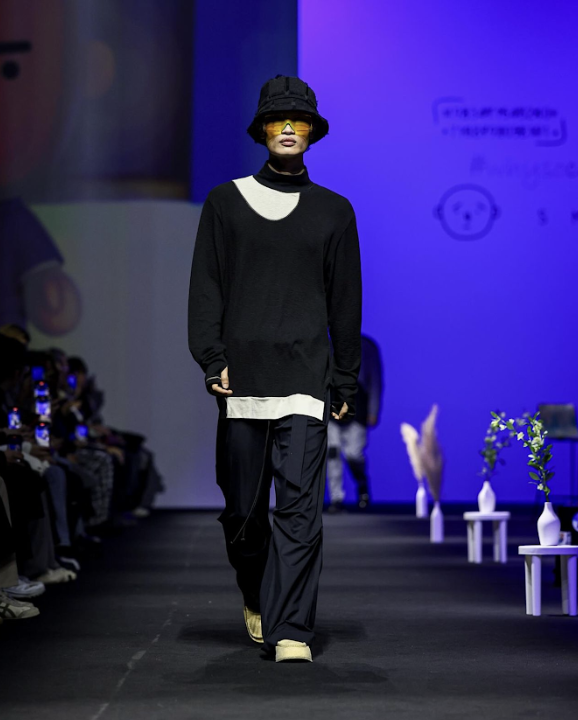
At the prospect of the upcoming edition of Who’s Next trade shows, we are delighted to once again showcase the remarkable selection of the What’s Up space.

Who's Next? The great thing about the initial chaos of Who's Next is that it has lasted.

In anticipation of the upcoming BIJORHCA trade show, held alongside Who's Next from the 8th to the 10th of September at Porte de Versailles, we are delighted to present a selection of new brands you won’t want to miss. A must-attend event for the jewellery industry since 1930, Bijorhca returns this year with a fresh wave of inspiration for jewellery enthusiasts and professionals alike.

Founded in 2021 by Germain Provot Lorenz, Treaptyque is far more than just a showroom—it's a vibrant and unique space dedicated to curating exceptional pieces.

KEIA (Korea Environmental Industry Association) advocates for eco-conscious initiatives among creative industries in South Korea and abroad notably. Since 2023, the association has been exhibiting on our IMPACT trade show along with Who’s Next. Their project revolves around supporting and promoting sustainable practices and key players of Korea’s industries on an international scale.

BIJORHCA returns alongside Who's Next to transport you from the urban buzz of Barcelona to the carefree summers of the Balearic Islands. Bright and poetic, Spanish jewellery celebrates its artisanal and cultural heritage through both contemporary and timeless designs.

Future Positive by Smiley is back with a space dedicated to its fashion collaborations with brands such as Eastpak, Rainkiss, Jules, Snocks, Saturday Society, Hoptimist and Small World, in the IMPACT area of Who's Next.

Discover the jewelry trades at Bijorhca with Savoir pour Faire, from January 20 to 22, 2024. Bijorhca will be showcasing know-how in Hall 4, where some 150 brands and suppliers are expected.

From January 20 to 22, Who's Next presents its hair fashion selection.

Who's Next presents its new edition, from January 20 to 22, 2024.

Imaginé et créé en 2013, le collectif A Jewel Made In Greece présente et promeut le savoir-faire joaillier grec.

